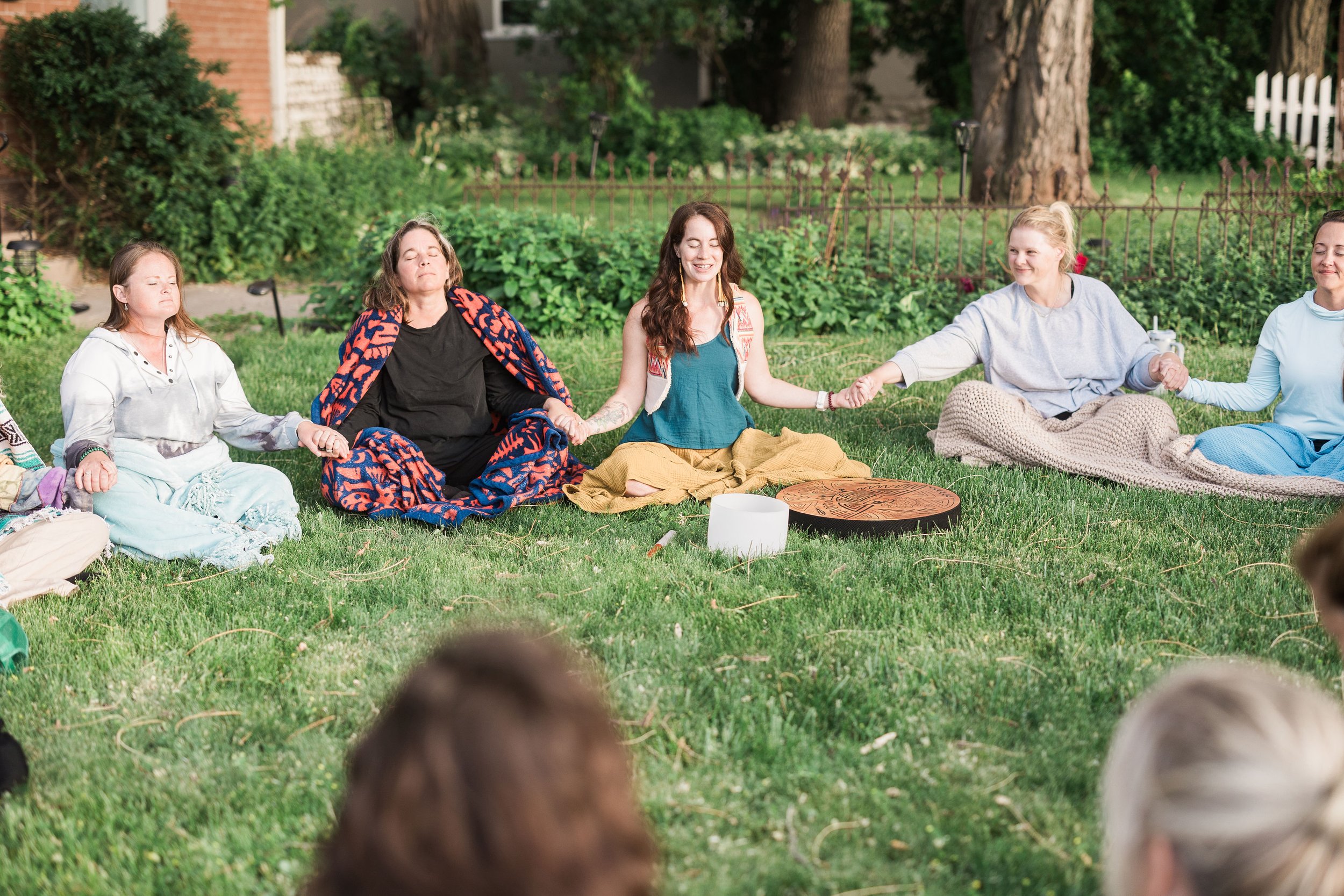
Crystal Bowls
Materials : silica sand (broken down quartz crystals)
Alchemy bowls - silica is infused with other crystals and gemstones
Lathe vs molded fuse method
Uses: private or 1:1 settings, group settings
How to play: gently tap the side of the bowl with a mallet or run the mallet around the rim of the bowl - the mallet matters
Drop the buzz: Play with the angle of the mallet - start about 45 degrees and then open up the angle so it’s more on top and roll your wrist so you aren’t dragging the mallet the whole time, constant pressure
Can be played in intervals
The largest bowl is the root of the scale, so if the largest bowl is C that’s the root note of the set
Materials: different metal alloy combinations, often bronze, some are factory made or hand hammered
How to play: in your hand or on a cushion, use the mallet to tap the bowl or play around the rim, the mallet needs to match the size of the bowl
The sound comes from the vibration of the walls of the bowl
Longer sustain
Used traditionally in buddhist monasteries and made by monks
Gongs
Materials: bronze, brass, or other alloys
Warming up the Gong - quietly get it vibrating or swell
Muting a gong in the middle the edge continues, muting the edge the middle continues
Mallets and Flumies
Playing a gong
Around the clock (12, 3, 6, 9)
Clockwise
Counter-clockwise
Tie within the Tai Loe - connecting Heaven and Earth
Slur - like skipping across the surface of a lake
Don’t hit directly in the middle, that’s more of an attack sound and weakest spot on the instrument and no overtones
We hit it off-center
More toward the edge = brighter with more overtones
Vibrotactile Sensation - you can feel the vibration coming off of them
Symphonic - wide spectrum of sound, has a definite pitch, used in orchestras/bands, embossed edge, longer sustain
Chau - predecessor to the symphonic gong and thicker, more dense, of Chinese/Asian descent, not as many highs as a symphonic, darker sound, embossed edge
Wind - percussive sound, thinner, higher pitch, flat, Chinese/Asian descent, quick decay, low-presence of a fundamental tone making it a good sound effect instrument, pink or white noise (high-end harmonics), responsive, choke it quickly, good for beginners, more affordable
Java/Balinese Gong - nipple gong, mainly played in the center to get a low-resonant tone, pure fundamental tones
Grotta Sonora - Italian
Chimes:
Wind Chimes
Other types of chimes
Drums
Materials: animal hides, vegan materials
Traditional instrument, earthy, percussive
Can be played with a mallet or with your hand (lap style)
Other drum styles:
Djembe (West Africa)
Tabla (India)
Taiko (Japan)
Bodhran (Ireland)
Conga (Cuba)
Darbuka/Doumbek (Middle East)
Bongo (Cuba)
Snare Drum (Western)
Bass Drum (Western)
Timpani (Western orchestral)
Other Instruments
Ocean Drum
Chakapas
Shakers
Harmonium
Tingsha cymbals
Kalimba (finger piano)
Handpan
Guitar
Harp
Monocord
Tuning Forks
Didgeridoo or Mayan Hompak
Where to get Instruments:
Beautiful Sounds - CLARISSAMAE for $20 off
Initiation Invitation:
What instruments do you have in your sound temple? Choose something, drum, bowl, your voice and begin to really connect to that instrument. Notice the tonality, the overtones, the vibration and rhythm of your instrument.
What instruments would you like to start to incorporate into your sound temple and how will you start to envision bringing them into your life?

